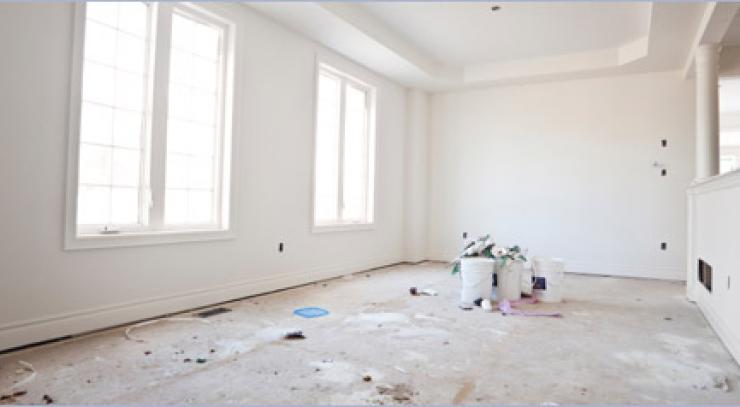Builders and developers are not renowned for their foresight and finesse. They cut corners, disregard best practices, and often flaunt the rules, even with the best of intentions. This often leads to disputes with other residents, who feel the effects of construction. If you have a neighbor developing a new property, you need to ensure that the construction doesn’t inflict direct or indirect damage to your property. As a result, you may require a building inspection with a dilapidation report.
Dilapidation reports may be a foreign term to many, but the term itself is one of the most important terms in construction law. This blog will focus on the definitions, importance, and benefits of these reports.
What is a dilapidation report?
According to the Australian Institute of Building Surveyors, dilapidation reports "provide an independent, unbiased, and complete evaluation of the existing status of a building, site, or other property... [and] are a key risk assessment tool." The report includes a thorough assessment of the home's interior as well as its exterior, both above and below ground. It also includes comprehensive, detailed information about the present state of the building, including the foundations' quality, plumbing, electrical, and any other systems in place. The report also includes actions and/or corrections that should be taken in the future.
When is a dilapidation report needed?
A dilapidation report inspection is an important step in maintaining your property's health and safety. A report will give you a detailed overview of any issues with the property and will allow you to make necessary repairs or improvements.
If you notice any signs of deterioration on your property, or if there are concerns about potential safety hazards, it is important to have a building inspection with a dilapidation report done as soon as possible. By taking action now, you can avoid more serious problems down the road. Here are some of the scenarios:
- Neighbor building a new property - If you have a neighbor who is building a new property, you must make sure that the construction does not cause any direct or indirect harm to your property. Evidence is the strongest safeguard for your rights in situations like this. Anyone who is in the vicinity of construction should acquire a thorough dilapidation report.
- Buying a new property - If you are planning to buy a new property, you may want to know how much you will need to spend on its repairs and maintenance. A dilapidation report inspection will help you determine the current state of your property. This report will also guarantee that you are aware of the issues, allowing you to make informed decisions about the property's upkeep and repair. The report you receive will assist you in ensuring that you are aware of the issues so that you can make critical choices about the property's maintenance and repair.
Regardless of the reason, it is important to remember that obtaining a dilapidation report inspection is an important step in ensuring that your investment is safe and sound.
What is included in a dilapidation report?
Dilapidation reports are carried out by experienced building inspectors who are knowledgeable in the particular aspects of a property that are likely to be affected by construction. During a dilapidation inspection, these technical experts understand just what to look for. A dilapidation report is intended to indicate the overall condition of a property and not an assessment of the property’s market value. The report aims to identify the areas of a property that could be affected by the construction works and to highlight any areas that may need maintenance or repair. The dilapidation report will give you an idea of the condition of the whole building and the likely impact of the construction works on the property.
A dilapidation report also includes information on the materials used in the construction of the property, as well as any materials that could be potentially dangerous to the workers and the environment. The report also details any existing cracks, damage, and defects, as well as any existing materials that need to be removed.
The dilapidation report details the condition of a property, including the fixtures and fittings, at the time the report is compiled. It will detail the condition of the walls, floors, ceilings, windows, and doors. It will also detail the state of the electrical and gas installations and the plumbing. The report will identify any damage or defects, and recommend repair work.
What are the advantages of hiring a dilapidation expert?
There are many advantages to hiring a dilapidation expert? The first advantage is that the expert will be able to provide a more detailed building inspection report. This can help you identify specific issues with your property and make decisions about what needs to be done to fix them. Another advantage is that the expert will be able to give you advice on how to prevent further deterioration. By understanding the root cause of deterioration, you can take steps to prevent it from happening in the future.
Cost of dilapidation report inspection
There is no definitive answer to this question as it will vary depending on the specific situation and the type of report that is required. However, generally speaking, a dilapidation report inspection should be requested as soon as there are indications that the condition of a building or structure may be deteriorating beyond what is considered normal wear and tear. This could include anything from signs of water damage or structural instability to signs of pests or hazardous materials.
Reasons why you need the dilapidation report
Dilapidation is a term used to refer to the state or condition of a property, structure, or building. It means the gradual decay or deterioration of the property. It takes place over some time and results in the property's inability to meet its original purpose. Dilapidation can be physical, political, social, or economic. It can be caused by natural, manmade, or a combination of both factors. Repairing damage may be costly. As a result, proving how it occurs and who is to blame is frequently challenging. This is why a survey dilapidation report is required. The following are reasons why you need it:
- Preventative Action - The main reason why you need a dilapidation report is because it will help you find the current state of your property. It will also suggest any structural issues that you might not be aware of. The report will be thorough and unbiased, so you can rest assured that you will be getting the best possible report. The report will help you find out the current state of your property and whether renovation is needed. It will also be very helpful if you are thinking about selling your property.
- A guide for contractors and builders - The use of a dilapidation report can help contractors minimize damage during construction. They will take steps to reduce movement, vibration, and water overflow that could have an impact on nearby surfaces or features.
- Contractors are protected against false claims - When building contractors are suspected of causing damage to neighboring homes, they can use a dilapidation report as evidence against requests for compensation. The report will show that the damages existed prior and were not caused by them during construction—making it easier (and less costly) than litigation!
If you are considering buying a property, you must make sure the property is in good condition. A dilapidation report inspection is an important step in protecting your property from damage. By requesting the report as soon as possible, you can ensure that the inspector has enough time to complete the building inspection and provide you with a thorough report.









